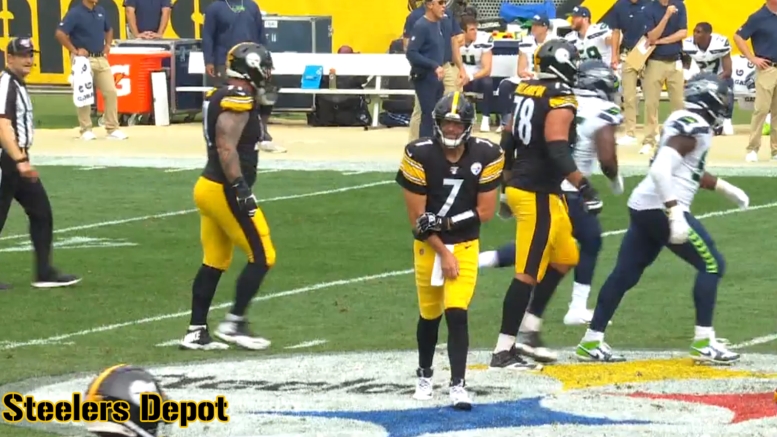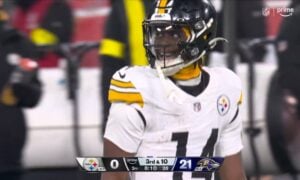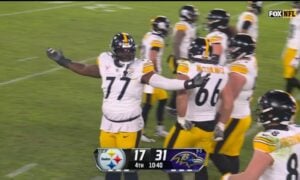After sitting out the second half of the Pittsburgh Steelers Week 2 loss to the Seattle Seahawks in their home opener at Heinz Field yesterday, quarterback Ben Roethlisberger was expected to undergo an MRI today. While the results had not yet been publicized, I expected that either Adam Schefter or Ian Rapaport would report on what the films show and more by the end of today.. When the news is this big and it involves whether a franchise QB could need season-ending surgery, the league doesn’t make fans wait until Mike Tomlin’s weekly Tuesday press conference.
In a surprising twist, the Steelers head coach beat the NFL insiders to the punch, as the Steelers just released this update:
So exactly is Ben’s injury? I still have no idea. Depending on which Twitter expert you believe, it could be anything (and thanks to all who tweeted to me with a definite diagnosis for Ben). While some, like Dr. David Chao who tweets as @profootballdoc, have a history of a very high accuracy rate based on video of the injury, this one is tricky because it’s a non-contact injury as far as we can tell. Which means there’s no video to review other than Roethlisberger grabbing his elbow and shaking his arm out. Until the specifics of the MRI report comes back, let’s look at the differential diagnosis (aka the list of possibilities):
- Ulnar collateral ligament (UCL) injury. This has been a topic of discussion and the leading diagnosis of Dr. Chao. While I won’t torment you with the full anatomy and surgery lessen unless we have a reason to take a deeper dive, here is some basic info (https://www.hopkinsmedicine.org/health/conditions-and-diseases/ulnar-collateral-ligament-ucl-injuries-of-the-elbow) courtesy of Johns Hopkins University. The UCL is a thick ligament that connects the humerus, of the upper arm bone, to the ulna, one of the forearm bones. When it is fully torn, baseball players often have to undergo the dreaded Tommy John surgery. If Ben requires this surgery, it will almost certainly be season-ending.
But here’s the thing. NFL players don’t require surgery for UCL tears as often as MLB players do, maybe because QBs don’t throw as fast, as many times per game, or in as many games per season. In a 2010 review (https://www.ncbi.nlm.nih.gov/pubmed/20609599) of the NFL injury database from 1994 to 2008, 10 QBs were identified as having UCL injury. 9 of those 10 players did not require surgery and the average time to return was 26.4 days. It was Jake Delhomme who underwent surgery on October 18, 2007. He was throwing a football again the following February and made his return in the Panthers 2008 season opener, beating the Chargers and going 23/41 for 247 yards and a TD.
So even if Ben needs surgery for a UCL injury, that doesn’t mean his career is over.
- Lateral epicondylitis. Otherwise known as tennis elbow, this is also an overuse injury. In this case, it is the tendons that attach the forearm muscles to the bottom of the humerus that get inflamed. Here is a description (https://orthoinfo.aaos.org/en/diseases–conditions/tennis-elbow-lateral-epicondylitis). Dr. Jessica Flynn, a sports medicine doctor who tweets as @jessdeede, is leaning towards this diagnosis. She mentioned that Big Ben was wearing a counterforce strap (elbow brace/wrap) in this game, which is commonly used for tennis elbow to apply compression below the elbow and support the forearm muscles. The primary treatment is the usual ice, rest, and NSAIDs. Sometimes, steroid injections or ultrasound-guided needle treatment are used to melt the scar tissue. If surgery is needed, it’s often done arthroscopically and is mostly a “clean-up surgery”, trimming the tendon that has torn away from the bone. Tom Brady reportedly had tennis elbow in 2011 and obviously never required surgery for it.
- Golfer’s elbow, or medial epicondylitis, is much less common in NFL QBs. Here is a rundown (https://www.andrewssportsmedicine.com/conditions-and-treatments/golfers-elbow-medial-epicondylitis) of this injury from the website of Dr. James Andrews, who often treats pro athletes. Given that NFL QBs virtually never get this injury, I really couldn’t find much on it.
And so we wait for additional updates so that we can understand exactly what the injury was and what surgical procedure is needed. Here’s hoping that Roethlisberger can fully recover following his surgery this week. Regardless of the news, good or bad, I’ll try to decode it for you once we have more answers.








